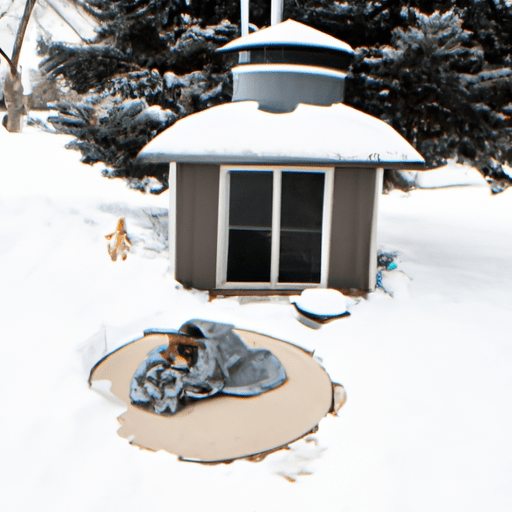“`markdown
How to Keep Outside Dogs Warm
1. Providing a Suitable Shelter
A dog’s shelter is its fortress, a safeguard from the harsh elements of the outside world. As a caregiver, it’s your responsibility to ensure your furry friend’s home is warm and comfortable, especially during the colder months.
Consider getting an insulated dog house. Insulated dog houses are designed to protect dogs from extreme weather conditions. The walls are lined with a material that traps heat, keeping the inside of the house warm even when it’s freezing outside.
Remember to place the dog house in a safe location. Avoid areas that are prone to strong winds or flooding. This will ensure your dog remains safe and dry.
2. Dressing Your Dog for the Weather
Just as you bundle up when it’s chilly outside, your dog needs a little extra help staying warm as well.
Here are some points to remember:
- Dog Sweaters and Coats: These clothing items provide an extra layer of warmth to your dog’s body, especially beneficial for short-haired breeds.
- Booties: Protect your dog’s paws from cold, icy surfaces with dog booties. It prevents frostbite and provides better grip on slippery surfaces.
| Clothing Item | Importance |
|---|---|
| Dog Sweaters and Coats | Provides an extra layer of warmth |
| Booties | Protects paws from cold surfaces |
3. Regular Health Check-ups
Regular veterinary check-ups are crucial during the winter months. Cold weather can exacerbate certain health conditions, such as arthritis. Keep a close eye on your dog’s behavior and physical health.
4. Adequate Food and Water
Your dog’s diet might need to be adjusted during colder weather. Dogs burn more energy to stay warm, so an increase in their food intake may be necessary.
Remember to:
- Monitor your dog’s weight.
- Provide fresh, unfrozen water at all times.
- Avoid feeding your dog immediately before or after vigorous exercise.
5. Special Considerations for Puppies and Senior Dogs
Puppies and senior dogs have a harder time regulating their body temperature. They might need extra care and attention during the winter months.
- Puppies: Consider bringing them inside more often or provide a heated bed.
- Senior Dogs: They may benefit from joint supplements or heated pads to ease arthritis pain.
FAQ
Q: Is it ok to leave my dog outside in the cold?
A: While dogs are more resistant to cold than humans, they can still suffer from hypothermia and frostbite. If it’s too cold for you outside, it’s probably too cold for your dog as well.
Q: How can I tell if my dog is cold?
A: Shivering, lethargy, and whining are signs your dog might be feeling cold. If these symptoms persist, contact your vet immediately.
Q: What should I do if my dog refuses to wear clothing?
A: Not all dogs are comfortable wearing clothing. In such cases, you can focus on improving the insulation of their doghouse or providing a heated bed.
“`



